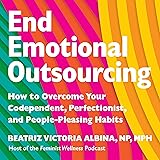The digital age has profoundly reshaped our daily lives, integrating technology into almost every facet of modern existence. While the internet offers countless benefits, from instant communication to vast knowledge repositories, its pervasive presence also brings forth significant challenges, particularly the growing concern of internet addiction. As highlighted by Prof. Dr. Nevzat Tarhan in the accompanying video, a striking lack of awareness among parents and society at large exacerbates this issue, leading to various misconceptions and harmful usage patterns.
Understanding the nuances of internet usage, distinguishing between beneficial engagement and problematic dependency, becomes crucial for fostering healthy digital habits within families. Many individuals, unfortunately, fail to recognize the subtle yet insidious progression from casual online activity to a genuine addiction, often dismissing alarming signs as mere engagement. This oversight can have profound long-term consequences on an individual’s mental health, social development, and overall well-being, necessitating a more informed and proactive approach from caregivers.
Understanding the Spectrum of Internet Use and Digital Dependency
Internet usage exists along a broad spectrum, ranging from entirely healthy and productive engagement to deeply problematic and addictive behaviors. Prof. Tarhan rightly points out that a low societal awareness often results in risky, harmful, or even dangerous usage. For instance, risky usage might involve spending excessive time online, yet still maintaining most daily responsibilities, whereas harmful use occurs when an individual acknowledges negative impacts, such as declining academic performance or strained relationships, but continues their online habits unabated.
Dangerous use, however, is a significantly more severe classification; it fundamentally shifts the individual’s priorities, positioning the internet as the central focus of their existence. Consider internet use akin to driving a car: initially, you might observe traffic laws and exercise caution, representing healthy use. Harmful use could be compared to consciously speeding, knowing it’s wrong but doing it anyway, while dangerous use might involve recklessly driving without regard for safety or consequences, putting oneself and others at significant risk. This escalation underscores the critical need for increased vigilance and early intervention.
A notable challenge lies in distinguishing between passionate hobby engagement and genuine behavioral addiction, especially with activities like online gaming or social media. However, a key differentiator often revolves around the impact on daily functioning and an individual’s ability to self-regulate. When these boundaries blur, and the internet becomes the sole source of interest and gratification, significant red flags begin to emerge, signalling a deeper issue that requires careful attention and often professional guidance.
Unpacking the Statistics: Revealing the Extent of Internet Addiction
The statistics surrounding internet usage and addiction paint a concerning picture, underscoring the urgency of this issue. According to a 2018 study conducted in Turkey, internet usage rates were alarmingly high, with approximately 80% of males and 65-70% of females regularly accessing the internet. While computer usage was slightly lower, at 60% for males and 50% for females, the overall digital engagement clearly demonstrated the internet’s widespread integration into everyday life. These figures highlight a societal shift where online connectivity is no longer an option but a prevalent daily activity.
Even more concerning are the prevalence rates of diagnosable internet addiction, especially among younger demographics. A significant study by the Izmir National Education Directorate in 2018 revealed that 12.6% of high school students met the criteria for internet addiction. This means roughly one in every 15 to 20 teenagers in high schools could be struggling with a serious dependency, a figure that is undeniably substantial. Imagine an entire classroom where several students are grappling with this issue, affecting their concentration, social skills, and overall academic performance.
The implications of such high prevalence extend far beyond individual well-being, affecting family dynamics and societal structures. Prof. Tarhan also referenced investigations in the United States, indicating that excessive internet use is now recognized as one of the top three reasons cited in divorce petitions filed in courts. This startling statistic underscores how digital overuse can erode fundamental relationships, highlighting the destructive power of unchecked digital habits on the very fabric of family life. These data points collectively demand our attention and a concerted effort to foster healthier digital ecosystems.
Recognizing the Red Flags: Symptoms of Digital Overuse
Identifying internet addiction often involves observing significant changes in an individual’s behavior and daily routines. Prof. Tarhan meticulously outlined key symptoms, emphasizing how the internet takes a central position in an addicted individual’s life. Foremost among these indicators is a disrupted sleep pattern; individuals often stay awake late into the night, prioritizing online activities over necessary rest, leading to chronic fatigue and poor concentration during the day. This consistent sleep deprivation can cascade into numerous other health issues, both physical and mental, creating a challenging cycle to break.
Similarly, an individual’s eating habits can become severely disturbed. Regular meal times might be ignored or postponed in favor of continued online engagement, often leading to unhealthy snacking or irregular eating patterns. This disinterest in basic physiological needs signals a profound shift in priorities, where the virtual world overshadows essential self-care. Moreover, general daily life activities, such as personal hygiene, academic responsibilities, or household chores, begin to suffer significantly, often being neglected or rushed through minimally.
A particularly telling symptom arises when the internet becomes the person’s *sole* area of interest. When all other hobbies, social interactions, academic pursuits, or family engagements lose their appeal, and the digital realm monopolizes their attention, this indicates a deep-seated problem. It is like an athlete who once loved diverse sports, now only finds joy in one, ignoring all others to the detriment of their overall health and relationships. This singular focus often isolates the individual, preventing them from developing a well-rounded life and fostering meaningful real-world connections.
Beyond Personal Health: Societal Ripples of Digital Overuse
The impact of internet addiction extends far beyond the individual, creating significant ripple effects throughout families and society. As mentioned, the unsettling revelation from US studies, citing excessive internet use as a leading cause of divorce, serves as a stark warning. This statistic is not merely anecdotal; it appears formally in court documents, illustrating how digital habits can fundamentally erode the foundations of marital relationships. Issues like infidelity conducted online, excessive gaming leading to neglect of spousal duties, or a spouse’s complete withdrawal into the digital world can trigger irreconcilable differences, fracturing families.
Within family units, communication frequently breaks down when one member is deeply engrossed in online activities. Parents struggle to connect with children who are constantly tethered to screens, and partners find themselves talking to a vacant stare rather than an engaged listener. This breakdown in direct interaction can foster resentment, loneliness, and a profound sense of disconnection, even when physically present. Family meals, once opportunities for bonding, transform into silent gatherings where each person interacts with their own device, rather than with each other, hindering essential emotional development and closeness.
Furthermore, society bears the cost of this rising issue in less obvious ways. A generation less skilled in face-to-face communication, potentially more prone to social anxiety, and less equipped for nuanced emotional exchanges might emerge. Decreased productivity in workplaces, increased mental health challenges requiring public resources, and a general decline in community engagement can all be attributed, in part, to widespread digital overuse. Addressing internet addiction therefore becomes a public health imperative, demanding comprehensive strategies that extend beyond individual treatment to include broad preventive measures and educational campaigns, emphasizing responsible digital citizenship.
Cultivating Healthy Digital Habits: Strategies for Parents
Given the pervasive nature of digital technology, completely eliminating internet use is neither practical nor desirable. Instead, the focus should shift towards cultivating healthy digital habits and fostering resilience against internet addiction. Parents play an indispensable role in this process, serving as guides and role models in navigating the complex digital landscape. Establishing clear boundaries around screen time and internet use is paramount; this means setting specific times for online activities, defining no-screen zones within the home, such as bedrooms or during meals, and adhering to these rules consistently to create predictable routines.
Encouraging alternative activities provides vital counterbalance to digital immersion. Engaging children in sports, creative arts, reading, or outdoor play helps develop diverse interests and strengthens real-world social skills. These activities offer rich experiences that promote physical health, cognitive development, and emotional well-being, effectively broadening a child’s world beyond the confines of a screen. Moreover, parents should actively participate in their children’s online lives, understanding the platforms they use, the content they consume, and the communities they engage with, enabling informed guidance.
Open communication is another cornerstone of prevention. Regular, non-judgmental conversations about online experiences, cyberbullying risks, and the importance of privacy can build trust and encourage children to share concerns. Rather than imposing strict rules without explanation, discuss the ‘why’ behind screen time limits, explaining the impact on sleep, academic performance, and social interactions. If signs of internet addiction persist despite these efforts, seeking professional help from a child psychologist or a therapist specializing in behavioral addictions is a crucial step; these experts can provide tailored strategies and support for both the individual and the family.











